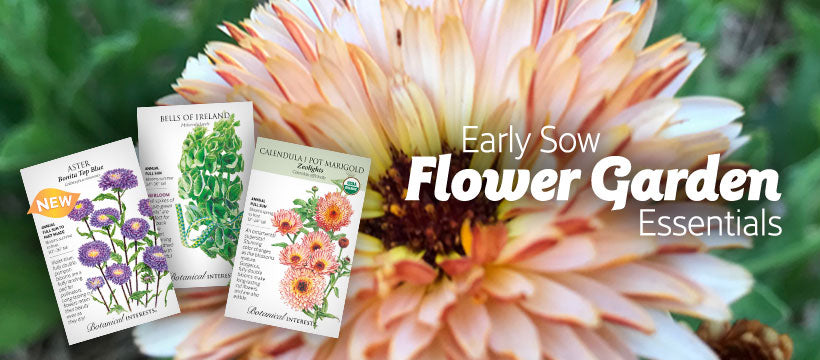Need another reason as to why you should join in on the fun of homegrown garlic? Along with being a low maintenance crop, we like to talk garlic up as one of our favorite companion plants because it organically protects plants from pests and diseases, encourages the growth of other plants, and attracts beneficial insects. Its powerful aroma makes garlic an amazing companion to most plants and may be planted in the negative space throughout your garden or around the border. Let's explore its pest control properties and why garlic should be incorporated into your garden bed.
What is Companion Planting?
Companion planting is an organic gardening technique of intentionally arranging certain crops in the garden for a mutually beneficial purpose. One reason that companion planting has proven useful is the many symbiotic relationships between plants, where two plants from different families can live in harmony with one another. For example, beets and garlic are great companion plants because they enjoy different nutrients. Garlic grows closer to the surface so as not to take up extra space, and near enough to protect the beets from infection and pests.
Benefits of Garlic
Garlic accumulates sulfur in the soil, which is a natural fungicide and will protect soil and crops from disease and pests. This, along with the potent odor that garlic produces, makes planting garlic throughout your garden a natural deterrent to aphids, caterpillars, mites, fungus gnats, cabbage loopers, ants, snails, onion flies, codling moths, Japanese beetles, and possibly mammals. Using garlic as a chemical-free fungicide and pesticide contributes to organic gardening efforts, thus encouraging beneficial insects to create habitats and pollinate our vegetable gardens.
Companion Plants
Here are some plants that would love to be neighbors with garlic, and some that will want to keep their distance.
- Tomatoes, potatoes, sweet peppers, eggplant, spinach, broccoli, cauliflower, kale, lettuce, beets, parsnips, and carrots are all crops that benefit from garlic's powerful odor to deter common pests.
- Flowers like geraniums, marigolds, and nasturtium would also thrive with garlic planted nearby since they use different nutrients and grow at different soil depths.
- Herbs, including yarrow and tarragon, help the growth and health of garlic, chamomile improves the flavor, and rue drives away maggots (which can be a problem for garlic).
- Be sure to plant beans, peas, asparagus, sage, and parsley in a different area in your garden, as garlic can affect the growth and taste of these plants.
- Strawberries and garlic have been widely debated about whether or not these two plants can be paired together. Some research studies say that garlic stunts the growth of strawberries, while others show that the pungent odor of garlic deters pests away and that they grow beautifully together. This could be a great experiment to try for yourself to explore the relationship between plant species!
Interplanting garlic throughout the garden helps promote biodiversity, can increase crop yield, and provides a fresh supply of one of the world's most beloved foods!
Written by Madeleine Pesso

